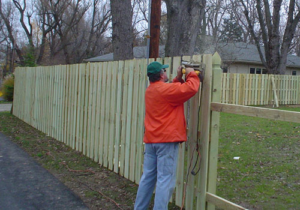Strongsville Plumbers is a skilled tradesman who installs, repairs and maintains pipes and fixtures. They also inspect plumbing systems and components to ensure they are functioning properly.
This career requires extensive knowledge of building codes, blueprints, and safety protocols. It also demands strong customer service skills, as plumbers often interact with clients when troubleshooting or repairing their plumbing.

Plumbers offer installation services that include laying out and connecting pipes, installing fixtures such as toilets, sinks, and water heaters, and testing the plumbing system to ensure it is functioning properly. They must be familiar with building codes and regulations regarding the placement and connection of different components. They also use specialized tools to examine and diagnose plumbing issues.
Depending on the area of expertise, plumbers can specialize in residential or commercial systems. In addition, they may choose to focus on new construction or remodeling. A high school diploma or equivalent is typically the minimum educational requirement for a career as a plumber. Some plumbers learn the trade through a formal apprenticeship program sponsored by a local union or trade organization. Others pursue a vocational degree at a community college or technical school to get the skills and knowledge needed for employment.
Once a plumber has accumulated some experience and the required certifications and licensing, they can start their own plumbing business. This often requires the ability to communicate with clients, read blueprints and schematics, and complete installations according to specifications. Plumbing contractors must also have excellent customer service skills to answer questions, provide estimates, and ensure the client is satisfied with the work completed.
In some cases, a plumber may be called to fix an emergency issue that cannot wait until the next scheduled appointment. This may require working outside of regular business hours or at night, and requires a willingness to adapt to unpredictable schedules. Whether fixing a leaky faucet or a major pipe disaster, plumbers must remain calm and be able to troubleshoot problems quickly.
As plumbing systems become more complex, the need for skilled plumbers will continue to grow. This is because the systems are responsible for bringing in freshwater, taking away waste water, and regulating indoor temperature through pipes, valves, fixtures, and appliances. These systems are crucial to the health and safety of any building’s occupants, so plumbers must be able to identify and repair problems quickly to prevent costly repairs in the future.
Maintenance
Many people don’t give much thought to their plumbing until something goes wrong, at which time they are faced with a messy situation and a large bill. However, it is possible to keep your pipes and fixtures working well with regular maintenance and preventive measures. That’s where a plumber can help!
In addition to repairing and installing pipes, fixtures and appliances, plumbers also offer maintenance services. This can include unclogging drains, testing for leaks and ensuring that all parts are functioning properly. These services can save you money in the long run by catching small problems before they become bigger, more costly ones.
Plumbers can work in a variety of environments, including residential homes, commercial buildings and industrial settings. They often work in tight spaces and may be required to stand for extended periods of time. Because of this, they need to be comfortable with physical demands and have good hand-eye coordination. Plumbers must also be able to read blueprints and understand construction processes. In addition, they must be knowledgeable about local codes and regulations regarding plumbing systems.
Plumbing is a skilled trade that requires extensive education and training, as well as certification. There are a number of ways to get the qualifications you need to become a plumber, including attending a vocational school or taking an apprenticeship. While these options take longer than completing a four-year degree program, they can provide you with the skills and experience necessary to start your career.
In order to maintain their plumbing license, plumbers must attend continuing education courses. These classes allow them to stay up-to-date on new technologies and industry standards. This ensures that they are providing customers with the best possible service.
Because plumbers work directly with clients, they must have excellent customer service skills. They should be able to listen to their customers’ needs and concerns, explain complex issues in an easy-to-understand way and provide accurate estimates for their work. Plumbers also need to be reliable and punctual, as they are frequently called on to address urgent matters. They may need to work evenings or weekends and be on-call for emergency situations.
Repair
From hot showers to bubble baths, we rely on our plumbing fixtures and pipes to provide us with clean, safe water. But when something goes wrong, a plumber is needed to fix the issue as quickly and efficiently as possible. The services offered by a plumber include water heater repairs, drain cleaning, clog repair and leak detection. Most plumbers also offer gas plumbing repair services, which is a must for any home with a natural gas line.
Leaks are one of the most common plumbing problems that homeowners face. They can occur in any part of the plumbing system and can range from a small hole in a pipe to a major flooding event that causes serious water damage. Plumbers are equipped with the right tools and knowledge to diagnose any leak issues and provide the proper solution.
Drain lines are responsible for channeling waste and water out of your home, and they can become clogged with debris over time. Plumbers can use high-powered water jets to clear out clogged lines and restore them to their original condition. They can also install backflow preventers to ensure that waste doesn’t enter the home.
A clogged drain or pipe can be extremely inconvenient, and it’s important to address the problem immediately. Homeowners can often try to unclog their drains themselves, but this can lead to further damage if the clog is due to a broken pipe or sewer backup. Plumbers have the tools and knowledge to get to the root of the problem and fix it correctly the first time.
Plumbing problems can affect every area of your home, from the kitchen to the bathroom. Some are more urgent than others, and a plumber can help you decide what course of action is best for your situation.
Plumbers are highly trained professionals who know how to work with a wide range of materials and plumbing fixtures. They can even install new ones if needed. They are also licensed to ensure that they have the skills and knowledge necessary to complete a job safely and effectively. Many plumbers use project management software to stay organized and track their progress.
Troubleshooting
Plumbing systems take away waste water, supply hot and cold water, and regulate indoor climate through pipes, valves, fixtures and fittings. They are complex networks that can be affected by a variety of factors, from aging equipment to blockages, leaks and other problems. Plumbers are skilled professionals who diagnose and repair these issues. Their services can save households money, time and trouble.
Many common plumbing problems have DIY solutions, but some require the expertise of a licensed professional. From dripping faucets to clogged drains, these issues can significantly impact the functionality of your home’s plumbing and lead to expensive repairs if not addressed promptly.
Most people don’t realize how important their home’s plumbing is until it stops working. The good news is that with proper maintenance and regular checks, most plumbing problems can be avoided.
If you’re looking for a plumber in New York City, look for one who specializes in maintenance and has experience with a wide range of plumbing systems and fixtures. Ask friends and family for recommendations or read online reviews and ratings. You should also look for a plumber with licensing and certification, as this shows that they have undergone training and have met the industry standards.
In addition to their technical knowledge, plumbers need excellent customer service skills to communicate effectively with clients and provide accurate estimates. They must be able to listen closely to their customers’ concerns and answer questions clearly. They should also be punctual, reliable and respectful of their customers’ homes.
Plumbers also use specialized tools and equipment to perform inspections and troubleshooting. For example, they might use a video camera to inspect a pipe for a blockage or test the pressure in a toilet tank to identify the source of a leak. They can also repair or replace faulty fixtures and fittings, such as toilets, sinks, showerheads, water heaters, and more.
Some of the more complex plumbing problems that plumbers may need to fix include clogged drains and sewer problems. Clogged drains can be caused by a variety of factors, including hair, soap scum, and paper products. If these clogs are not resolved quickly, they can cause significant damage to your home’s plumbing and pose health risks. In most cases, a plumber will need to clear the clog with an auger or snake and then clean the drainpipe using a hydro jetting tool.






